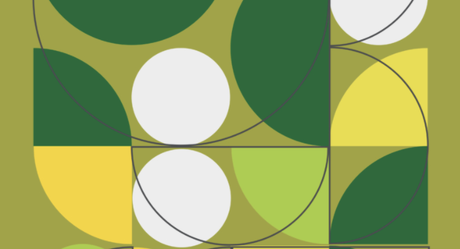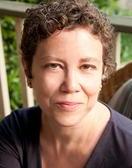 Depiction of complex identities, created for the new Jews of Color Initiative study
Depiction of complex identities, created for the new Jews of Color Initiative study Yesterday, the Jews of Color Initiative released an important new study: "Beyond the Count: Perspectives and Lived Experiences of Jews of Color." Most media coverage of the report is focusing on how the study documents the discrimination experienced by Jews of Color in Jewish settings. I fully support the recommendations made in the report, intended to galvanize American Jewish communities.
Inevitably, I read this new report from my perspective as a white person who grew up in an interfaith family, and as someone who works to make space for people who honor multiple religious heritages. For twenty years, I have been researching, writing about, and publishing the voices of people from interfaith families, many of whom are also from intercultural and interracial families. And from that perspective, I make some recommendations here for further research.
The study is based on a survey of 1,118 Jews of Color, plus 61 in-depth interviews, and is filled with important quantitative and qualitative data. The study was conducted by a notably diverse set of researchers-the labels they claim include Black, Chicano, Asian, Sephardic, neurodivergent, trans, queer, atheist, and millennial. As such, and as a study that asked Jews of Color to speak to their own experiences, this study documents with unprecedented depth and sensitivity the experiences of Jews of Color (a contested term, as described by both the researchers and respondents).
The study also documents, and yet mentions only briefly and obliquely, and even erases, the interfaithness of the experience of some Jews of Color growing up in interfaith families, and the importance of other religions and forms of spirituality in their lives. Since the study itself provides little commentary on these findings, I wanted to highlight those findings here and ask some questions important for further exploration.
- 42% of the respondents have only one Jewish parent. What was the religion of the other parent? What importance did that religion have to the respondent in childhood, and today?
- 16% of the respondents said they were raised "Jewish and something else." What religion was the "something else"? What did this interfaith childhood look like? Did they attend church or mosque and synagogue? Attend two religious education programs? Celebrate two sets of holidays in the home?
- 21% said they identify as Jewish and "one or more other religions." Which religions? How many of those people were raised with both parental religions, and still identify with both? How many began to identify with the other religion in their heritage only in adulthood, and why? How many added a new religion or religions, different from those in their ancestry, to their Judaism in adulthood?
- 6% of the mothers of respondents, and 7% of their fathers, were raised "Jewish and something else." How many of these respondents with parents raised both, were raised both themselves? What does this say about the reality of multigenerational interfaith families? What does it say about the persistence of the idea of educating interfaith children about both family religions?
The report is strengthened by dozens of quotes from those who were surveyed or interviewed. The quotes mention a Bollywood-themed Shabbat, Japanese foods used in a Havdalah ritual, Senegalese-based practices, and having multiple racial and cultural identities. But nowhere do the 42% of respondents with a parent of another religion, or the 21% who identify today with more than one religion, actually name or explain the importance of those other religions (with the exception of one mention of earth-based indigenous practice). It is striking that nowhere is Buddhism, Christianity, Hinduism, or Islam even named.
I understand that work funded by Jewish philanthopists, and often motivated by engaging more people in Judaism, inevitably centers the Jewish perspective. This study demonstrates how important that work is to help Jewish institutions understand how to affirm and engage with the diversity of Jews today. And I do understand why Jewish networks had to be used to find the respondents and those who were interviewed, even though this means the study does not represent all people of color with Jewish heritage.
But to fully understand the intersectional experience of people with interfaith heritage (including many Jews of Color) will require going further. Researchers need to ask for and listen to the stories of how the spirituality and culture of Buddhist, Quaker, Latino Catholic, Black Protestant, Greek Orthodox, Pagan, African diasporic, Unitarian-Universalist or Native American parents and ancestors have also been formative in the lives of Jews of Color, and more generally, Jews from interfaith families. We need to make space for the stories of how these family members and ancestors of other religions may have been important, even in the lives of those who now identify "exclusively" as Jewish.
Understanding the full complexity of the religious identities of Jews of Color also requires a willingness to name the other religions practiced by those who are current multiple religious practitioners. The reluctance to mention any religion other than Judaism will not erase these religions from these families, or from intersectional identities. And finally, coming to a better understanding of people of color with Jewish heritage will require reaching those who no longer identify with Judaism and were not asked to, or would not, fill out this survey. That task may seem difficult, but neither are we are free to avoid it.
Journalist Susan Katz Miller is an interfaith families consultant and the author of Being Both: Embracing Two Religions in One Interfaith Family (2013), and The Interfaith Family Journal (2019).

